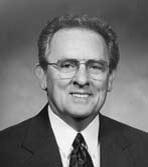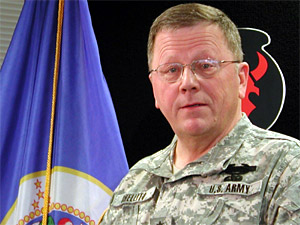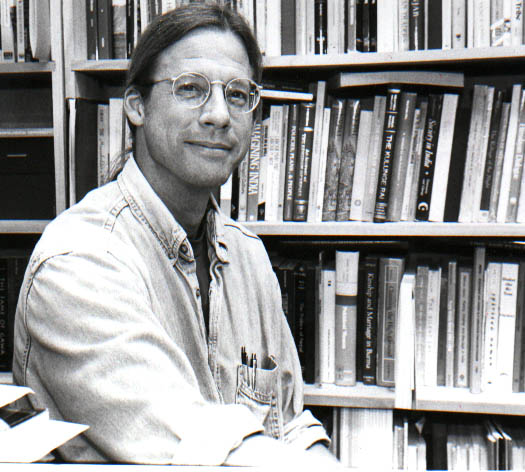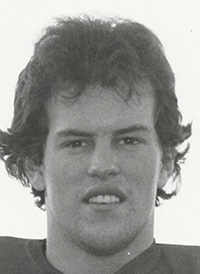Alumni Stories 125th Anniversary
By sharing alumni stories, we shine a bright spotlight on our incredible alumni who represent Minnesota State University Moorhead and have helped transform our world.
A 1965 MSUM accounting graduate, Joe Groggin was climbing across a narrow ridge exposed on both sides by a 1,000-foot drop in the jungle mountains of Papua New Guinea when he slipped on a log and fell onto a nine-foot long python. “I didn’t know it was a python,” he said. “I just thought it was some brush. It was dark at the time. But someone yelled out ‘snake, snake’ and dispatched the python. It wasn’t big enough to kill me, but it could have done some damage.”
For the rest of the trip, they called him “Python Joe.” Goggin was part of a search and rescue mission to find and identify an American WWII bomber and its crew missing for over 61 years. He was one of nine volunteers on an adventure sponsored by MIA Hunters, the only U.S. civilian MIA search organization.
About 15 hours after beginning the journey, the MIA team staggered into the village of Samaran at the top of the mountain. The next morning the five remaining hunters, including Goggin, attempted to reach the bomber site, another four-hour trek, led by villagers. They eventually found the downed plane, later identified as an A-20, WWII Havoc with a crew of three. The Hunters planted an American flag and said a prayer for the MIA crew, whose remains were still entombed in the wreckage.
It is MIA Hunters policy not to interfere with graves, so the group took photographs, plotted the bomber’s site via GPS and removed small pieces of identity evidence. All of it would later be mailed to the U.S. Army’s Recovery Unit in Hawaii, who would send a recovery team to the site to excavate the remains of the crew, return them to Hawaii for forensic identification and eventually return the MIA’s remains to their relatives.
The next day, the group used a satellite telephone to leave via helicopter. The journey had been "one of the greatest experiences of my life,” said the 72-year-old Goggin. “We all paid our own way and just getting there was difficult. I don’t know if I can do it again at my age. But I have a cousin whose plane crashed between Burma and Calcutta in 1943. He was a Japanese prisoner of war being transported. If that wreckage is ever found, I certainly would like to go on that mission.”
In some ways Joe Goggin's journey began when he graduated from Moorhead State as the second person to receive a Bachelors degree in accounting, in the 1960s. "I finished in the spring of 1960, and I think the first graduate in the program got his degree in 1959. But my diploma reads 1965 because of a mix-up in the paperwork." As an accountant, Goggin's future depended on making certain no such mix-ups occurred for his employers.
He worked in a couple of jobs as an accountant before joining Red Wing Shoes in 1967, He was the company's comptroller, an upper management position. He liked living in southeast Minnesota and enjoyed the challenge of being part of an American shoe company that was facing growing international competition. "We had to find a market niche and were totally determined to be better than anyone else in it," he explained in a 1995 interview. "We remained competitive because there were customers willing to pay for comfort, durability and service." The continued success came in part because of Goggin's careful management of expenses. The board of directors rewarded him for this in 1995 with presidency of the company. Under his direction, the company enjoyed five years of steadily increasing sales and profits. He enjoyed the challenge; "I had over 30 years of fun, I can honestly say I never had a day when I didn't want to go to work."
Goggin retired in 2000. Most days since he can be found at his home in Red Wing or some where around town -- when he isn't packing to look for lost airplanes or taking some other adventure.
(Portions of the above are condensed from items first published in Alumnews, Fall 1995 and Fall 2007 issues)
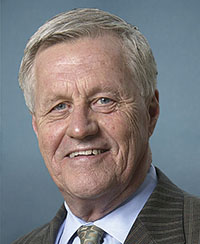
Collin Peterson (1966)
Careful management of finances and an urge to help farmers have become the hallmarks of Collin Peterson’s life in the US Congress. Born in 1944, he grew up on a farm near Glyndon and was educated in the local public schools. He began his schooling at “the one room school house I attended in Elmwood Township with my sisters and cousins when I was eight years old. Today we remember the one room schoolhouse as not merely an educational facility of the past, but also a community tradition. The one room schoolhouse in District 115 was closed when I was in fifth grade with only 7 students enrolled, and from there I moved to Glyndon to attend classes.”
After high school, He entered Moorhead State College in 1962 and concentrated on a double major in Business Administration and Accounting. He graduated with his BA degree in 1966. He had also in the North Dakota National Guard during his college years, from 1963 to 1969. He pursued post-graduate studies and became Certified Public Accountant, after which he ran small business owner in Detroit Lakes, Minnesota.
But politics soon drew him to another calling. He was elected to the Minnesota Legislature as a Democrat (DFL) in 1976 and served for ten years in the State Senate, where he took a special interest in bills to help the famers and small towns of western Minnesota. By the mid-80s, he felt ready to seek a seat in Congress, filing for the 7th Minnesota Congressional District of the House of Representatives. Although he lost his first couple of races to Republican Arlan Stangeland, that changed in 1992, when Peterson beat Stangeland with only a one percent vote margin. He has since been re-elected eight times.
As a long-time member of the House of Representatives Agriculture Committee, Peterson is currently the most senior member of the House Committee on Agriculture and served as Chairman of the committee in the 110th and 111th Congresses. With his own experiences in living on a family farm, he has concentrated his energies on helping family farmers and farmer-owned cooperatives in Minnesota.
Most recently, Peterson has been working with Minnesota’s senators, Amy Klobuchar and Al Franken, to obtain aid for the state’s farming population from the USDA. The 2012 drought conditions have threatened the famers with ruin, most especially the small farming families. "Producers across the country have been impacted by [drought] conditions out of their control,” Peterson recently told constituents. “I’m pleased to see USDA utilize existing farm bill programs to provide Minnesota farmers with much-needed relief,” Peterson said. “I remain committed to ensuring a strong safety net is in place by urging my colleagues in the House to pass a five-year farm bill.”
And he has not forgotten his days at Moorhead. This past summer he met with several higher education leaders, including University of Minnesota President Eric Kaler and MSUM President Edna Szymanski, to discuss measures to secure the future of higher education in Minnesota – “The importance of maintaining our state's high standards of excellence in education is paramount. Times have changed, but our emphasis on education remains strong. Through our joint efforts, we hope to see higher education in Minnesota become the model for colleges around the country.”
(Adapted from E-zine online publication by Minnesota National Guard, November, 2010)
In October, 2010 Larry Shellito retired from his post as Adjutant General of the Minnesota National Guard, a position he held since being appointed by Governor Tim Pawlenty in November 2003. With his retirement he closed out 42 years of military service.
A graduate of Moorhead State in 1968, Shellito took ROTC classes while pursuing his studies, and enlisted in U.S. Army immediately after receiving his diploma. He was commission as a 2nd Lieutenant in the Infantry in 1969, and a few months later he went to Vietnam as a Mobile Advisory Team Senior Advisor. For his combat service in Vietnam he was awarded the Bronze Star, the Republic of Vietnam Gallantry Cross with Bronze Star, and the Combat Infantryman's Badge.
After serving his four-year Army service, Shellito enlisted in the Minnesota Army National Guard. Over his 37-year career in the Minnesota National Guard, Shellito served in many capacities including command assignments at the platoon, company, battalion, brigade and division levels. Even through all this, he found time to be President of Alexandria Technical College in Alexandria, Minnesota.
After becoming the Adjutant General for the State Guard, he was instrumental in establishing the state's "Beyond the Yellow Ribbon" program, which is now the foundation of a national program to reintegrate National Guard and Reserve military service members following deployments. Soon after, he announced his decision to retire, stating that he wanted to spend his last weeks in maintaining “the readiness that our fellow citizens have come to expect of the Minnesota National Guard and ensuring that our nation-leading "˜Beyond the Yellow Ribbon' program is well-positioned for a sustainable future. I am extremely proud of the Minnesota National Guard and am honored to have had the chance to serve."
"General Shellito has been a thoughtful, positive and inspiring leader for the Minnesota National Guard," Governor Pawlenty noted on Shellito’s departure from service. "During the past seven years, our Guard Soldiers, Airmen, and their families have served with distinction here in Minnesota and around the world. General Shellito's leadership has been a critical part of building our Guard's outstanding reputation and our nation-leading programs to support Guard members when they return from deployments. On behalf of a grateful state, we thank General Shellito for his exemplary service."
In honor of Shellito's service, MSUM has given his name to the University's Veterans Center.
Tom Fricke
On the wings of a poet, a peasant and a professor…
A mantra for ordinary Americans (originally published in Alumnews, Spring 1999).
"I was sick often and had a shaman blow mantra over me. I suffered from leech bites. I had head lice. The fleas and rats were maddening. I could not have been more pleased with any other field site."—Tom Fricke, from his book "Himalayan Households."
At 7200 feet up in the remote mountains of Nepal, Tom Fricke collapsed from severe sunburn, a victim of the intense ultraviolet rays cutting through the thin Himalayan air. When he awoke, his friend, a former WW II Gurkha soldier named Sirman Ghale, was gently rubbing bear fat into his blistered skin with rough peasant hands. Not far away, in the stone cabin where he lived, heated only by a fire pit, Fricke kept a copy of Tom McGrath’s epic poem, "Letter to an Imaginary Friend." If it weren’t for the advice of McGrath, who, like Sirman Ghale, had become both a mentor and friend, Fricke would never have seen the Himalayas. "If you really want to write," McGrath had told him over a few beers at Ralph’s Corner Bar in Moorhead, "you have to learn about people." That was more than 20 years ago. But that advice was as magical as Sirman Ghale blowing healing mantra over him.
Then an aspiring poet, Fricke took McGrath’s advice literally, switching his major to anthropology (a 1977 MSU graduate) to gain a more intimate insight into the human condition. He wanted to be either a writer, or maybe a high school English teacher.
Today, McGrath is gone, dying in 1990 at the age of 74. Sirman Ghale is in a Katmandu jail, implicated in a murder that Fricke insists he didn’t do. "It’s all very complicated and political," Fricke said. "But that’s were I visit him now. I can’t seem to get him sprung."
And Fricke? He’s now a 44-year-old anthropology professor at the University of Michigan, where he recently received a $2.8 million grant from the Alfred P. Sloan Foundation to establish the Michigan Center for the Ethnography of Everyday Life. The University of Michigan, coincidentally, boasts the top-ranked anthropology department in the nation.
Fricke’s goal: to impose order on the disorder of the ordinary.
Back to the poetic and prosaic
In a way, Fricke is coming home again, from the mire of academic statistics back to the poetic and the prosaic of his North Dakota beginnings.
"The impetus for our series of studies on ordinary Americans is precisely motivated by the lessons I learned at the feet of Tom McGrath and Sirman Ghale," he said. "We’re looking at a transition in American work and family that puts all of us in a world that’s fundamentally different, and, I suppose, more fundamentally dangerous. We’re losing our sense of community, or communitas, as McGrath put it, and replacing that with an almost obsessive focus on the self."
During the next two years—between administrative duties and teaching—Fricke will literally "hang out" in Richardton, N.D., a small rural community about 100 miles directly west of his hometown of Bismarck. While picking up on the rhythm of life there, he’ll also conduct an in-depth "ethnographic" study (combining daily observations, informal conversations, formal interviews and surveys) of everyday life in that nucleated village of the high plains.
It’s part of a team effort to document the apocalyptic changes in the culture, family and daily lives of middle-class mainstream families who live in the 12 states defined by the U.S. Bureau of Census as "The Midwest": Michigan, Ohio, Indiana, Illinois, Missouri, Kansas, Wisconsin, Iowa, Nebraska, South Dakota, North Dakota and Minnesota. The 12 anthropologists, sociologists, psychologists and economists assigned to the study will each spend the next two years in rural, urban and suburban Midwestern sites.
Oddly enough, Richardton, pop. 650, matches the population of Timling, Nepal, a remote mountain village 50 miles from exotic Katmandu where Fricke first began his research as an anthropologist. Except Timling is about a mile closer to the sun.
"Although physically the towns are worlds apart, the human situation between them is strangely similar," Fricke said. "Both Timling and Richardton are small communities marginalized and isolated by the intrusion of modern technology and pop culture. The elders have raised big families and now find themselves growing old alone. And what’s happening in Nepal is also happening across the Midwest—rural communities are drying up. Fast food chains are moving in, young are moving out."
The result: a pervasive sadness among the people left behind, Fricke said. And the loss of a sense of belonging for the people who moved away.
Fricke’s no stranger to that phenomenon. He and his five brothers all fled North Dakota to jobs elsewhere. His parents still live in Bismarck.
"What’s interesting in a study like this, which is similar to what I did in Nepal, is to document the kind of tenacious attempts on the part of people to retain what they had or what they knew in the face of such relentless social change."
Fricke explains a theory called punctuated equilibria—periods of rapid social change, followed by long periods of stability, then rapid change again. "We’re seeing these rapid changes right in front of our eyes. I want to be there as an anthropologist to tell the stories of these people, to illuminate their lives, to tell other people about them. It’s a great job and, I believe, it’s perfect timing."
From the exotic to the ordinary
Traditionally gravitating to the exotic, anthropologists have never really opened the door very wide to peer inside the lives of ordinary Americans. That’s been left to a few novelists, poets and barroom eccentrics.
"Hey, I understand that. I spent most of my career researching in the Himalayas," he said. "But I think it’s time for anthropology to bring the ethnography of everyday life to the United States, where it promises to add desperately needed concreteness to public debates about work, family life and social policy."
In other words, making it practical.
And instead of producing a stack of sterile, statistical, academic reports, Fricke insists they intend to write books that people will read—ordinary people, policy makers, politicians and planners. He wants to heed the advice of another literary chronicler of rural America, Sinclair Lewis, who said while accepting the Nobel Prize before the Swedish Academy: "Our American professors like their literature clear and cold and pure and very dead."
"For me, it’s like refreshing the well that first got me into anthropology," Fricke said. "I want to write a book that will bring texture to the lives of ordinary people. I don’t want to paint stereotypes. I want to document them as living, breathing human beings tested by change. That’s what anthropologists are suppose to do. To tell the story of a people, to detail their lives."
Fricke, an Army brat, grew up nearly everywhere. But his family roots were solidly sunk in Bismarck. "When my dad was transferred overseas, the family always moved back to Bismarck. My grandfather farmed around Baldwin, N.D. (pop. 39), but lost the family homestead in the early 50s before I was born. But when I was growing up I baled hay and drove machinery on my uncle’s farm."
Fricke showed a prophetic interest in writing about the ordinary. Here’s an excerpt from a poem he wrote at the age of 19 called "Driving Toward Sanger: Prophecy Fulfilled," about the last resident of that North Dakota ghost town:
And there is the last man in Sanger
Once a farmer
Corn shaman dreaming the future
Until the medicine ran out and the land was gone
Banks and mortgages all that’s left.
He gets drunk alone
Growing older in his house on the hill,
Burial scaffold etched against sun.
…It is fall
Leaves
The color of Armageddon.
No wonder Tom McGrath took a shine to Fricke. "I started out as an English major at Bismarck Junior College, then the University of North Dakota. In 1974, UND hosted a Beat conference that brought in a bunch of name writers like Gary Snyder and Lawrence Ferlinghetti. McGrath was there. That’s when I discovered my interest in poetry, and when I learned that one of the nation’s major figures in poetry—McGrath—taught 80 miles south. I transferred to Moorhead State right away."
As a student, Fricke worked on MSU’s grounds crew, mostly driving the garbage truck. McGrath also hired him to do chores at his house. "I think it was his way of helping a promising student. We had lots of long conversations at Ralph’s Corner Bar."
Fricke still thinks about him a lot. "Even more so now that I’m involved in this project," he said. "In particular, I think of a specific line from ‘Letter to an Imaginary Friend’ that goes: "All time condenses here. Dakota is everywhere.’ It’s so utterly true. The situation in North Dakota is the human situation, a microcosm of everywhere. Communitas is the name McGrath gave to the last communal group, on the verge of coming apart by external forces they have no control over—capitalism, greed, management, progress. Whatever you want to call it. He wrote passionately and specifically about the decline in a shared sense of community."
His poetry, Fricke said, should serve as a spiritual preface to the idea that we can only learn about the general human condition by first understanding the concrete experiences of people in specific places. "That’s what he did; that’s what we’re doing. It’s amazing how his ideas keep following me."
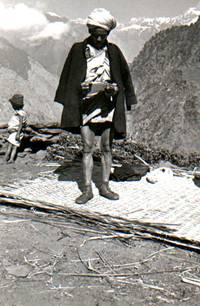
In the land of the Buddha
Fricke’s segue to Nepal was an accident. As a graduate student, he had his eye set on the Hudson Bay Cree Indians. But his graduate adviser opened a door for him in Nepal, and he stepped through it.
He first landed in Nepal—the birthplace of the Buddha, a mystical mecca where time is supposed to stop, one of the poorest and most inaccessible countries on earth—in 1981, already fluent in the language.
The 50-mile journey to Timling, located on a narrow shelf of land not far from the Nepal-Tibet border, starts at Katmandu with "the scariest 10-mile bus ride in the world," Fricke said. "Then the road ends. From there, it’s a five or six day climb to Timling, a slippery ascent during the monsoon season. But it can be a pleasant journey. On the way you can stop in villages were the town folk will serve you bowls of thick barley beer (the consistency of thin oatmeal) and pots of boiled potatoes."
Over the past 15 years Fricke returned to Timling dozens of times, the longest continuous stretch of living there being about 13 months. "I figure I’ve spent a total of four years in Timling."
During that time Fricke learned that North Dakota is, truly, everywhere.
"The people in Timling are, at their core, the same as me, the same as the people of North Dakota. Discovering the commonality of the human experience, and the pure joy shared from that experience, was probably my single most important moment there. Yet sadly, that ‘circle of warmth and work,’ as McGrath phrased it, is evaporating, like it is in North Dakota. The feeling is palpable. Work has changed. They’re no longer self-sustaining farmers. Jobs are in the cities. Their children move away. Even their religion has changed. In 1991 there was a mass conversion to Christianity. Their life is in constant crisis."
Or as the simple peasant Sirman Ghale put it (taken from Fricke’s field notes): "In the village, everybody is joined. But there (the city) a person makes his own way, his own provisions for tomorrow’s food; he’s alone. He builds one house for himself. And then another builds one for himself and so on…everybody for himself. And with that kind of process the old habits are gone, finished."
Richardton, N.D. (pop. 650)
So when Fricke started applying for grants to study ordinary Americans, North Dakota was on his mind. He drove throughout the state, looking for a town much like Timling, with a defined culture. He found that place, Richardton, about 60 miles west of his native Bismarck. "It was a magical sort of place when I was young. It has a definite German culture, and a religious one."
Driving by on Hwy. 94, you can’t miss the twin spires of St. Mary’s Church, a Bavarian Romanesque structure built in 1909. It includes Assumption Abbey, home to 60 Benedictine monks. Just west of town is Sacred Heart Monastery, home to 40 Benedictine sisters.
"After stopping in the café for a cup of coffee and some rhubarb pie, walking among the town folk, visiting the Abbey, I knew this would be my place to study."
This is a piece of rural, mainstream America, which contains 83 percent of the nation’s land and 21 percent of its people. Over the past four decades, farm employment in the United States dropped from just under 8 million to a little over 3 million. The number of farms has gone from 5.8 million to 2.1 million. Only about 5 million people, less than 10 percent of the rural population, live on farms today. And the elderly account for nearly a quarter of the population of most rural communities.
Fricke hopes to turn statistics like these into the human stories, stories that will change how policy makers think of rural Americans, from child care subsidies and Social Security benefits to farm aid and funding for rural clinics. "Statistics are good," he said. "But we are story-telling animals. That’s how we communicate best."
It’s anthropology with the instincts of Charles Dickens, Sinclair Lewis and Tom Wolfe.
"Rural America is filled with parents who raised their children in towns that once beamed with optimism," Fricke said. "Now they’re confronted with the reality that their towns are dying along with their dreams. If you look at your descendants as rings of a tree, what happens when the core dies? That’s what I was thinking when I came back home for my grandpa’s funeral last year. Will the children come back? Major changes occur when family and place no longer overlap."
Here’s what an anthropologist from Nepal, a collaborator with Fricke, wrote in the Katmandu Post about a recent visit to North Dakota:
"Americans are said to place no value in religion, but everywhere we went we observed many churches of the Christian denomination….We also hear much about Americans not valuing their families as much as we do in Nepal and throughout Asia. But in these rural areas, families seem to be larger than in cities and they maintain strong relationships."
Maybe so. But the foreboding statistics keep ticking away in rural America, despite the optimism of casual tourists.
North Dakota is everywhere. Some day it may be nowhere, a Buffalo Commons bone-yard of hopes picked dry by the miasma of the new millennium.
Could it happen? Maybe. It’s already happening in Nepal. Fricke simply intends to narrate the process. Hope and pray it has a happy ending.
Lynne Kovash
Life in the class lane
(from Alumnews, Summer 2010).
I was a member of the Student Union Programming Board when at MSU,: Kovash recalled after she was named the 10th Superintendent of Moorhead Public Schools in 2008. "I was in the Delta Zeta sorority and worked in the gift shop in the Union. I was pretty busy in those days." But then teachers are usually busy as a matter of course. Kovash earned a BS degree in secondary education in 197?, which a concentration in language arts. Her first teaching job followed, and after going back to Moorhead State for night classes to get a Masters in special education, she was dealing with students who has learning disabilities. "You simply learned to juggle your time," no simple thing at all since Kovash and her husband Dennis were raising three children during those years.
Further classes in education administration, taken in the Tri-College program, allowed Lynne to get a license as a K-12 principal. She was an assistant principal in the Moorhead District after that and took on a variety of tasks. "Oversight from several state and Federal programs has grown greater over the years, so I got into that because we had to prepare a lot of reports." She supervised the district's program for gifted students for several years, then became the district's supervisor of planning and assessment. "You think you'd know most of what you needed to know about paperwork by then, but assessment took the paperwork into a whole new level."
Kovash learned a lot about public relations as well. "Parents are everywhere, and many of us in education have found that being involved in other public organizations is a good way to promote public schools." At one time or another, Lynne has been a member of the Moorhead Rotary, the FM Economic Development Corporation, Trollwood's Coordinating Council, MEA, and the Tri-College Advisory Committee. "I always keep my scheduler with me, wherever I go," she laughed.
As Moorhead's District superintendent, Kovash still deals with challenges brought on by such things as the No Child Left Behind mandates and the recent budget difficulties common to an economic downturn. "We find it's best to keep on our toes, and I'm glad to say that we still have very high marks from the state for the quality of our teaching and the high numbers of graduates that we send on to college."
But that is success only to be expected. Retirement is on the horizon now, but Lynne feels she still has some things to take care of before she can "rest and spend more time with my grandchildren." She looks forward to every day at the schools. "I wouldn't have done all this were it not for Moorhead State. It's where I learned to meet the demands of teaching. MSUM has been a major part of my life, both in the classroom and outside the classroom."
Mark Reed saw football's “big show” before he ended his career as a quarterback. A native of Moorhead, Reed grew up in the 1960s, when to town was smaller in both size and population. His dad, David Reed, was the manager of O’Day Equipment, his mother a licensed nurse. Mark was a natural athlete, quick and agile, and so went into sports early. At Moorhead High, he lettered in both track and football, and football was what led Ross Fortier to recruit him to MSU in 1977.
Reed’s college years were exciting ones. As the backup quarterback he saw on limited in his first two seasons, but thereafter he quickly moved into the record books. He set school records for career pass completions (332), yards (4056), and touchdowns (28). Five of those touchdowns came in a whipping administered to Bemidji State in 1980, still celebrated as one of MSU’s best-ever game. At 6’ 3”, he was also one of the fastest sprinters on the team. His talents helped make MSU’s football team (8 and 2 in 1980) the 10th ranked team in NCAA Division II. Reed himself won All-American status.
Which was why the National Football League decided to scout him. As MMSU’s 1980 season was ending, Tony Dungy, then an assistant coach for the champion Pittsburgh Steelers, came to Moorhead to take a look at Reed. “Even among the top guys we’re seeing this year, there isn’t a consensus on who might develop into a pro quarterback,” Dungy told the local press. “That’s why I think Mark could get drafted. He’s physical strong and can take a pounding.” And drafted Reed was, taken in the eighth round by the New York Giants.
Reed’s future looked bright. But pro football is a capricious life, and Reed had the misfortune to be starting behind the Giant’s #1 pick of the previous year – Phil Simms (who, as irony would have it, had played his college ball at Morehead State in Kentucky). Alongside Simms was another quarterback, Scott Brunner, drafted two rounds before Reed. The rest of the football story was predictable – acting as a third string backup to Simms and Brunner, Reed spent most of his time on the sidelines. All too soon the Giants released him.
Reed’s remaining life story could have become one of those sad “might have been” tales that abound in sports. But Mark proved too resilient for that to happen; an electrical engineering major at MSU, he had developed his mind on an equal footing with his physique. After getting additional training in engineering, Reed entered into a prosperous design and construction career, from which he still earns a very good living. “The trick is not to just let life do things to you,” he told another Moorhead State alumnus a few years ago. “The trick is to take the opportunities that life offers and make them work for you.”
Scott M. Green
A native of Fargo, Scott Green worked his way through college by working as a part time clerk at First Bank. "Tuition was lower then, but it was costly enough in those days, so I worked to help pay the bills. Those costs were one reason I was interested in banking while I took my classes." So Green majored in Finance. "MSU had a terrific set of classes in business and finance, and the professors were exceptional." Graduating in 1984, he moved up in the ranks at First Bank and stayed on until 1993. "In 1993, I got a chance to take a bigger job, at Community First National. They hired me as an assistant vice-president in their commercial lending department. Fargo was growing fast then and there were a lot of applications or building loans and new business loans. So we got pretty busy."
In 1998, Scott completed a course of studies he took at the University of Wisconsin Graduate School of Banking. "They had a really good program there as well, and I used that degree to take on more responsibility. In 2001, the bank made me their senior lender. So then I was dealing with the biggest business ventures and handling really large sums of money." Three years later, in 2004, Community First merged with Bank of the West. "Then we were part of over 150 branches for Bank of the West, so I began to oversee more than one branch. As an area manager I now supervise operations for eight branches in eastern manager and western Minnesota. That means I spend some time on the road to check the branches, but thanks to the new electronics we have, I can take care of a lot of the communications and reports from here in Fargo. That's good, because my wife, Judy, and I love Fargo-Moorhead, it's been a nice place to raise our two kids." The love of Fargo has kept him busy with community activities ranging from the Vocational Training Center and Bethany Homes to the Fargo Public Schools Foundation and the United Way.
In 2010, Green received the MSUM Distinguished Alumni Award. "I was very pleased to be recognized like that; it sort of brings things full circle. MSU was where I found my passion for the banking industry. They gave me the tools I needed to pursue a career that has spanned 30 years. Without the tremendous opportunities afforded me through MSUM, my passion and goals might never have been realized."
Mark Vinz Poems
The Former Student
Even from the corner booth
you notice something familiar
in the bartender's eyes.
"Don't you remember me?"
The former student speaks,
reminds you he still hates to read
the kind of books you teach.
At the lake he's the one with muscles
and the dripping tan,
the irritated waitress on the midnight shift,
the mechanic who bludgeons you
with words like compression ratio and solenoid.
A nudge, a pointing finger, and a stare,
as if you can't survive the space
outside your office walls--
he does your taxes, fixes every leak,
loads your groceries, helps you to your seat.
When you visit the clinic for the final check
on your vasectomy
he's the one in charge of sperm samples,
the teller who sniffs your paycheck,
the headwaiter leering like a fish
at the holes in your socks.
Alone at last in the parking lot
you belch and sigh and scratch.
Guess who steps out from behind a parked car.
First published in College English, reprinted in Mixed Blessings © 1989 by Mark Vinz
For Friends Who Send Poems
In with the blare of circulars,
tidy notices in anonymous envelopes,
lurid promises of fortunes to be won,
there is a small package with my name on it,
light seeping from tears in the wrapping.
For a moment, everything stops:
I turn a book of poems over in my hands,
fingering the sheen of the cover,
the curve of each letter.
I see a face beside a window, expectant,
looking up with the thinnest smile,
and at that moment I remember
just how unfaithful I am:
I will abandon each page that
calls me to one of my own;
it may take years before I finish reading.
Then I see another face by the window,
my face, and I know again
that what we give, we get back,
what we lose, someone else will find for us,
and what is sent out will stay
beyond all finishing and forgetting.
From Mixed Blessings © 1989 by Mark Vinz

